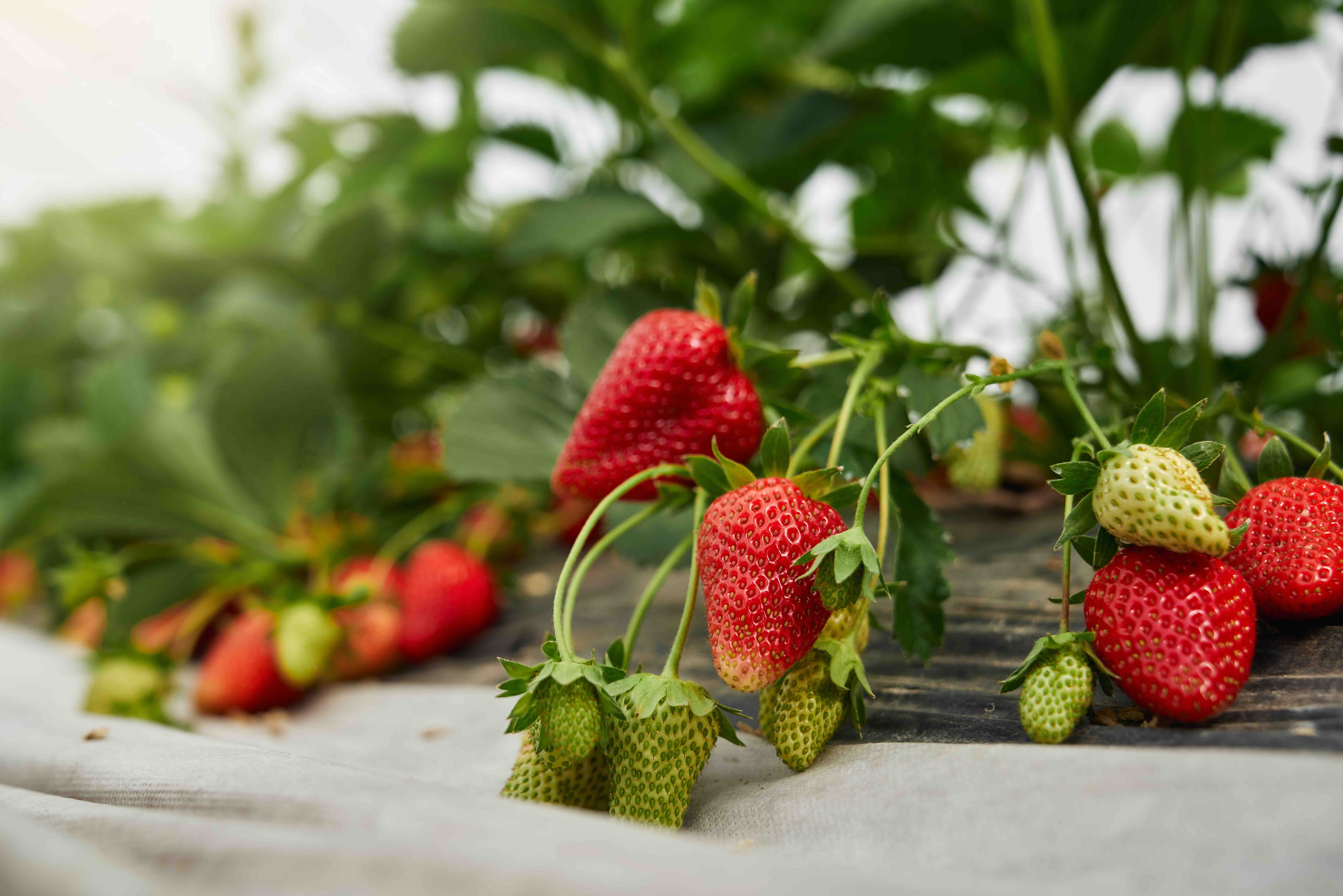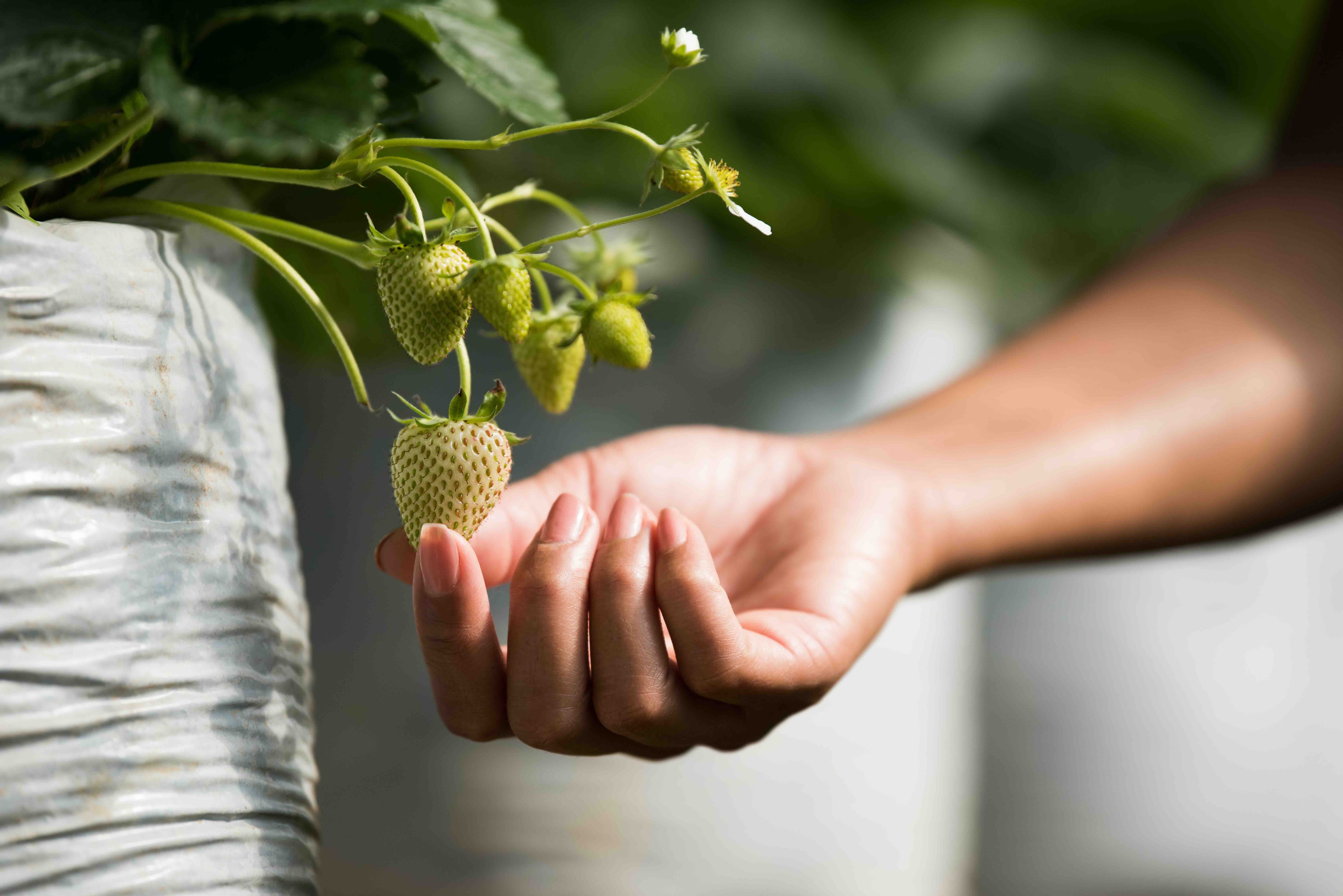Now that the spring season is here, we're diving headfirst into the sweet world of strawberry gardening. Growing strawberries is a fun growing experience as it is not only fruitful, but easy to plant and tend to, making it fun for everyone! Our Green Team has gathered their expert advice here for you to get started on your strawberry growing journey.



Planting the Seeds of Success
Before you get your hands dirty, it's essential to lay down the groundwork for your strawberry patch. Strawberries are versatile plants, thriving in various climates and soil types. However, they do have a few preferences:
- Light: Choose a sunny spot for your strawberries, as they love soaking up those golden rays. Aim for at least 6-8 hours of sunlight per day.
- Well-Drained Soil: Strawberries detest soggy roots, so ensure your soil is well-drained to prevent water logging. If your soil tends to retain water, consider planting your strawberries in raised beds or containers filled with a McDonald Garden Center’s Natural and Organic Potting Soil.
- Choosing the Right Variety: With hundreds of strawberry varieties available, selecting the perfect one for your garden can be overwhelming. June-bearing strawberries produce a single large crop in late spring to early summer, while everbearing varieties offer smaller, continuous harvests throughout the growing season. Consider your desired harvest time when making your selection.
- Planting Techniques: Whether you're starting from seeds or potted plants, give your strawberries plenty of room to spread out. Space them around 12-18 inches apart in rows with 2-3 feet between rows. Ensure the crown (where the roots meet the leaves) is level with the soil surface to prevent rot.
Nurturing Your Berry Babies
Congratulations! Your strawberries are in the ground and ready to flourish. But like any proud plant parent, they'll need a little TLC to reach their full potential:
- Watering: Keep your strawberries consistently moist but not waterlogged. Aim to water deeply once or twice a week, depending on rainfall and soil moisture levels.
- Feeding: Feed your strawberries with a balanced fertilizer once a month during the growing season to fuel their fruit production. Organic options like compost or fish emulsion work wonders for soil health.
- Mulching: Mulch is a strawberry's best friend, helping to retain moisture, suppress weeds, and keep those precious berries clean. Spread a layer of pine straw or shredded leaves around your plants, ensuring the crown remains exposed.
- Pollination: While strawberries are self-pollinating, encouraging pollinators like bees and butterflies to visit your garden can boost your harvest. Planting nectar-rich flowers nearby will entice these helpful insects to pay a visit.
Keeping the Pests at Bay
Unfortunately, you're not the only one eyeing those luscious berries. From slugs to birds, a variety of pests may have their sights set on your crop. Here are some natural methods to fend off unwanted visitors:
- Netting: Covering your strawberry patch with bird netting is an effective way to protect your fruit from hungry beaks.
- Handpicking: Keep an eye out for slugs, snails, and other pests, and remove them by hand to prevent damage to your plants.
- Companion Planting: Planting aromatic herbs like basil, thyme, or marigolds alongside your strawberries can confuse pests and deter them from munching on your bounty.
Finally, the moment you've been patiently waiting for: harvest time! As your strawberries ripen, pluck them gently from the plant. Fresh strawberries are a delight on their own, but why stop there? Get creative in the kitchen with strawberry jams, pies, smoothies, and salads. Or simply enjoy them straight from the vine, savoring each juicy bite as nature intended. To keep inspired and grow with us, follow us on Facebook, Instagram, Pinterest, and TikTok to dig into the joys of gardening!
